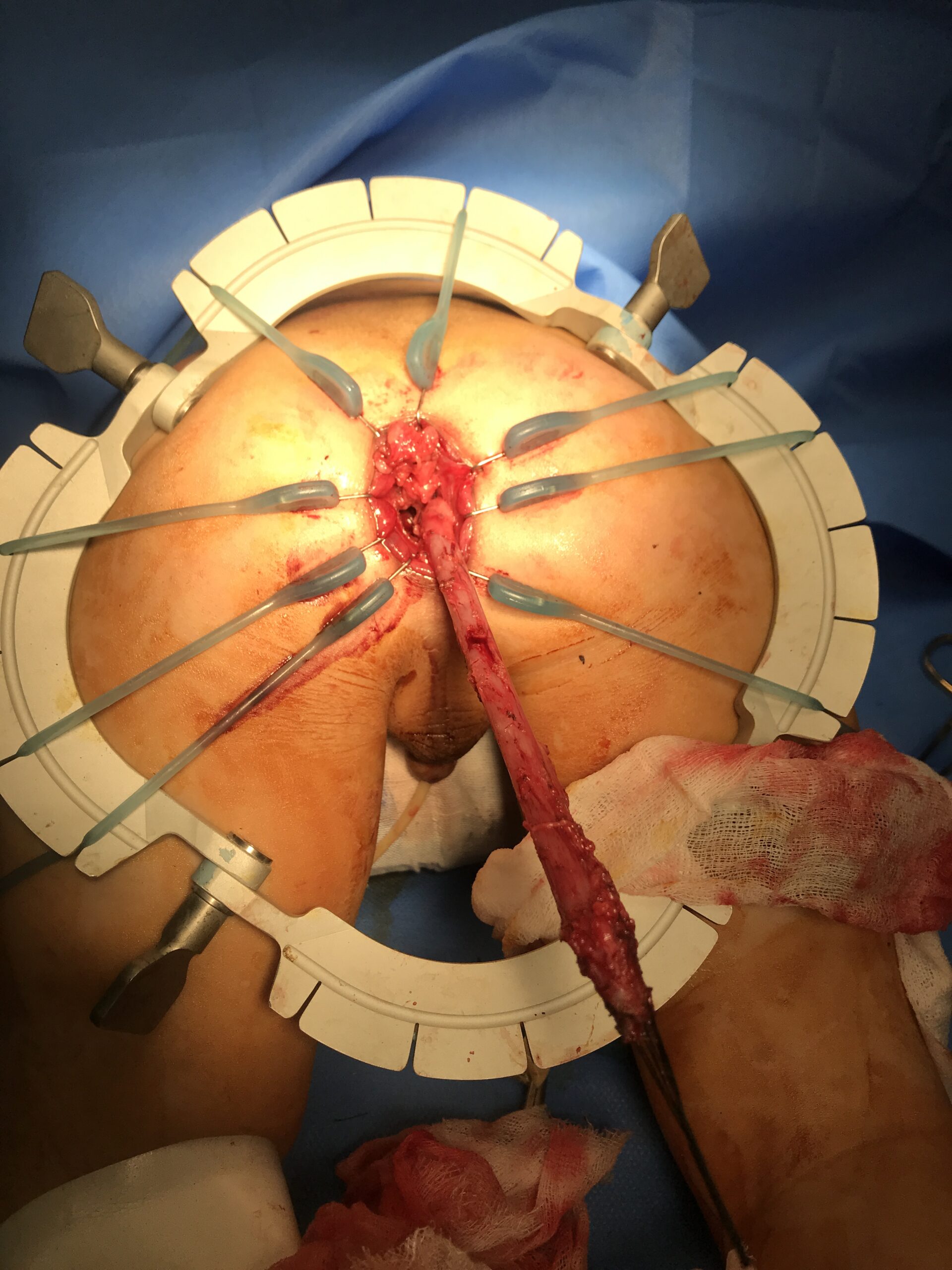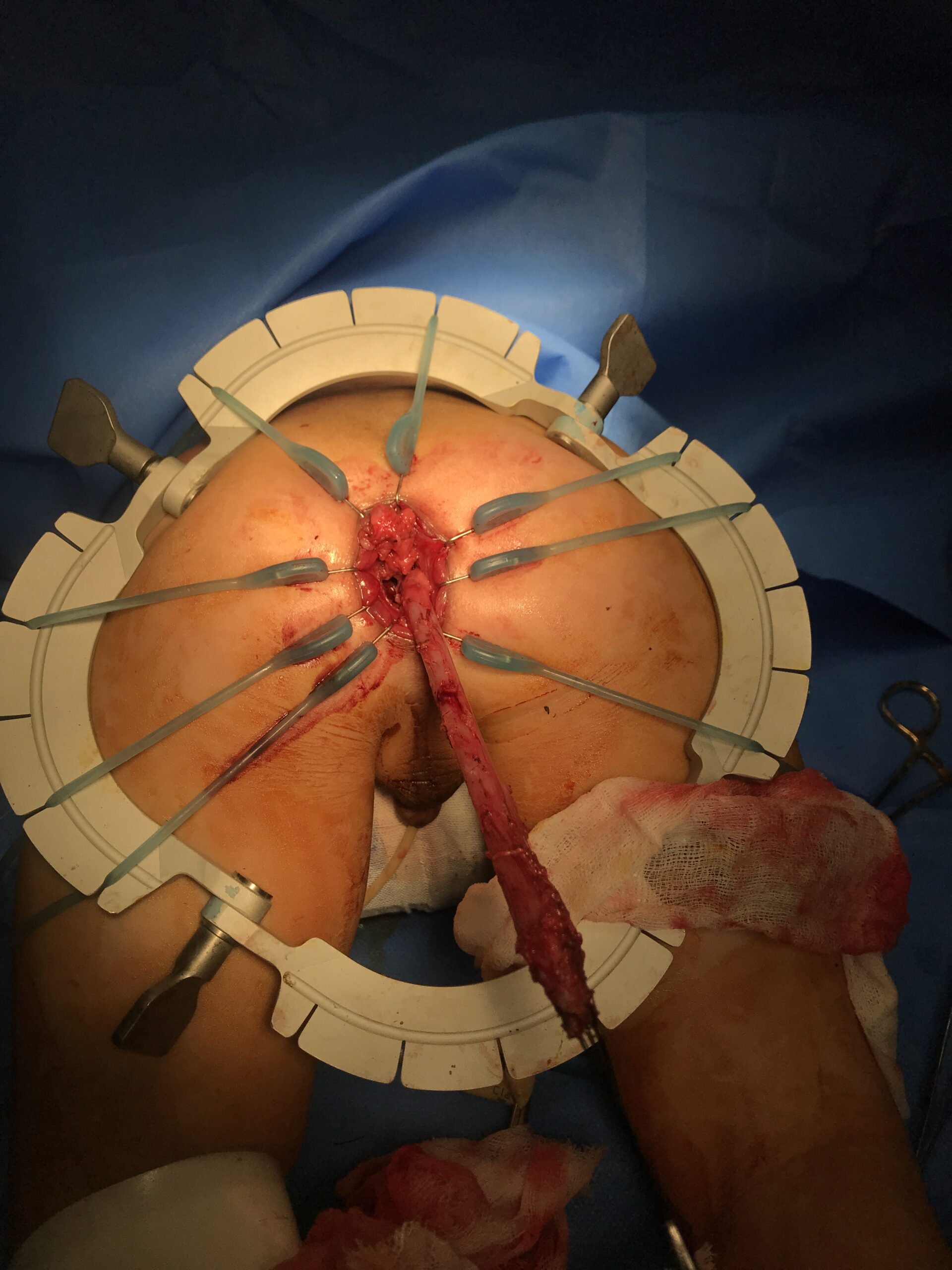Hirschsprung’s Disease
Hirschsprung’s Disease is a pretty common congenital anomaly among neonates. Its reported incidence is 1 in 5000 live births. Considering the same incidence, our country must be having at least 40 to 50 thousand patients suffering from the same disease.
Presentation:
These patients may present in a variety of ways. Mostly (more than 90% cases), these patients present in early age of life and within their neonatal life (first 28 days of life). They present with the history of not passing stool and distension of tummy. They might pass stool a few times after birth and then develop constipation.
In this condition, the intestines of the individual don’t have a capability to move routinely; therefore, patients suffer from Constipation and they cant pass stool by their own Chronic Constipation, Fecal Incontinence and Motility Problems.
Those who present late in life (10% of cases) present with the problem of having repeated episodes of constipation and distension of the tummy. These children usually have history of continuous contipationa nd have tried all available medications for this complaint.
Associated Conditions:
This condition is associated with many conditions (VACTREL-H Anomalies), and all of these are checked among these patients. These include:
- Vertebral Anomalies
- Anorectal Malformation
- Cardiac Problems
- Tracheoesophageal atresia
- Renal problems
- Limb problems
- Hirschsprung’s Disease
Diagnosis of Hirschsprung’s Disease:
As it is a common condition, so any trained Pediatric surgeon can make its diagnosis. Usually, surgeon will get the history of child and will do the examination of child. Afterwards, surgeon might advise some investigations depending upon the condition and history of child. Finally, most of the surgeons advise Barium enema (a Radiological investigation) and Biopsy of anus. The most authentic investigation for this condition is the Rectal Biopsy. Usually surgeon makes the diagnosis of this condition on the basis of history and examination. At the same time, surgeon may advise some routine tests, including X-ray of the tummy, Echocardiogram, X-ray of the back, and Ultrasound of the tummy.
Treatment of Hirschsprung’s Disease:
Treatment of this problem depends upon the age at the time of presentation, condition of child and availability of facilities. Mostly these children present in an emergency situation and most commonly a surgery along with Colostomy and Biopsy is done.
Once child is stable and Biopsy report has been received, we plan the final surgery (Pull-Through) at the age of 4 months.


Mostly, surgeons do it as a two-stage surgery; however, sometimes, surgeon may opt for a single-stage surgery or three-stage surgery.
Sometimes, children present later in life at a few months of life; we follow the same scheme.
Some FAQ's about Hirschsprung Disease
There are multiple causes of Hirschprung’s disease and no single cause has been identified yet. It is obsereved that in some families, it is more common. Also, it is more common in males than females. There is some genetic basis for this disease too which shows that it is inherited from parents to children. It is more common in cousin marriages.
Yes, it is a curable disease. The treatment for this disease is a long-term treatment and child may need more than one surgeries. After surgery, child will need a continuous support in order to help him pass the stool. But each and every stage of this disease is curable.
If it is untreated, you cannot poop without medicine or enema. So its treatment is essential. After its treatment, you can poop easily.
In most of the cases (90%), it occurs immediately after birth and child needs treatment in first few days of life. In less cases (10%), it is not that sever and child may get symptoms in intial few months of life. In all cases, child need proper treatment and management strategies.
In most of the cases, it is diagnosed in childhood. In some cases, these patients may grow up and present late. The patient will have sever constipation and it will not relieve with simple medicines. He will also have swollen belly and difficulty in passing stool. His stool will be too much foul smelling. He will be passing a lot of gas all the times. If you have any such symptom, you may need the treatment.
Bowel movement is controoled by lumbosacral spine. These are located at the bottom of your spinal cord.
Anybody can develop hirschprung’s disease. It is the abscence of ganglion cells (cells which hellp the movement of the intestine) which leads to constipation. However, in most of the cases, it is diagnosed at childhood age.
The main function of colon is to absorb water from poop and push it to the anus so that it may be expelled out of the body. So if colon stops working and does not perform its function, the stool will stay there for a much longer time. During this stay, maximum water will be absorbed from it. As it does not have the capacity to push it forward, so it will get harder. Then the new stool coming from behind will push it further. So, once it is passed out of the body, it will be too hard and will cause a lot of pain. This circle will continue and hardness and pain will increase each day.
Hirshcprung’s disease is diagnosed in a lot of ways. The primary thing is the history which will start since the birth of the child. Then we examine the patient and examine his belly. It will be swollen and large intestine will be large enough to be visible on the belly. Then comes the X-ray and Ultrasound. We usually perform an Xray of the belly after passing some dye from the bottom. This gives a lot of information. The ideal and most helpful of all of these is the rectal biopsy. during rectal biopsy, we take a chiunk of tissue from the anus and send it to the laboratory for examination. It tell us about the presence/absence of the ganglion cells (cells which are responsible for the movement of the intestine). If ganglion cells are absent on the report, it confirms the diagnosis of Hirschsprung’s disease
In Hirschsprung’s surgery, we remove the defective part and replace it with the healthy intestine. The duration of the surgeyr depends upon the level of the addected part. In most of the cases, the surgery takes 3-4 hours.
After pull through surgery, the care of the wound is very important. Once wound is healed, you will be advised by your doctor to pass a rod from the bottom, once a week. After pull through surgery, stom is taken down (if it is formed). Usually patients do good after the surgery and start passing stool regularly. Some patients still need medications and enemas.
Genetic testing is available for patients with Hirschsprug’s disease. It is a costly testing and not usually performed. In some patients who have other problems of thyroid and adrenals or kidneys, in them this genetic testing is performed. It is not recommended in all patients with Hirschsprung’s disease.
If it is not treated in time, you will continue having sever constipation. Because of the constipation, poop will stay for much longer time in the intestine than expected. This will lead to accumulation of the bacteria and will cause infection in the intestine (Hirschprung’s Associated Enterocolitis). This infection is dangerous and difficult to treat. So it is always recommeded to treat the Hirschsprung’s disease.